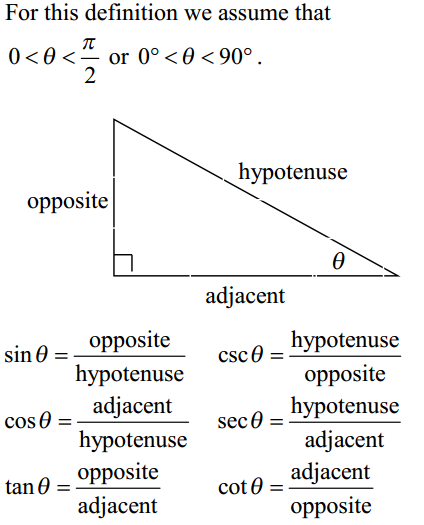
Remember that sine and cosine are percentages.

We’re “turning” $\sin(b)$, reducing it by a factor of $\cos(a)$.
#Trig identities cheat sheet full
The full height of the red triangle ($\sin(b)$) can’t be used either, since it’s at an angle.We gained vertical distance and lost horizontal distance.) We’re effectively “sliding back” $\sin(a)$, reducing it by a factor of $\cos(b)$. (Why? When we add angle $b$, we’re moving at a steeper angle with the same hypotenuse. The full height of the blue triangle ($\sin(a)$) can’t be used, since the red triangle doesn’t extend as far.When we add the heights, here’s what’s happening: Now that we’ve found the equation, let’s grok its meaning. Combined width: $ \cos(a + b) = \cos(a)\cos(b) – \sin(a)\sin(b) $īoom: two annoying-to-remember trig identities in a single computation.Now we’re talking! This version easily separates the horizontal position (real component) and vertical position (imaginary component): Just like breaking apart $17^2$, let’s multiply out the pieces: Aha! We can use Euler’s Formula to draw the rotation we need: Now here’s the weird thing: I can draw what the new height should be ( It’s right there!), but I can’t turn my drawing into an equation.Įuler’s Formula lets us create a circular path using complex numbers:Ĭrucially, multiplying complex numbers performs a rotation. The relationship between angle and height can’t be simple addition. If we keep adding up angles, their height increases until the max (100%), then starts decreasing. Remembering that sine is “height (as a percentage of max)”, this equation asks: If we add two angles, what is their total height?Ī quick guess might be to combine the individual heights: This is useful in factoring, simplifying equations, and so on.

The important aspect is realizing that $(a + b)^2$ can be broken into simpler ingredients: $a^2, b^2, a, b$. In the computer era, sure, we can just crunch $17^2$ directly. Working out $17^2$ directly is cumbersome. In algebra, we study relationships like this: Instead of memorizing these bad mamma jammas, let’s learn to draw the formulas. In math terms, we’re looking for formulas like this ( full cheatsheet):

Starting from the Pythagorean Theorem and similar triangles, we can find connections between sin, cos, tan and friends ( read the article on trig).Ĭan we go deeper? Maybe we can connect sine with itself (sin-ception).
#Trig identities cheat sheet how to
Trig identities are notoriously difficult to memorize: here’s how to learn them without losing your mind.


 0 kommentar(er)
0 kommentar(er)
